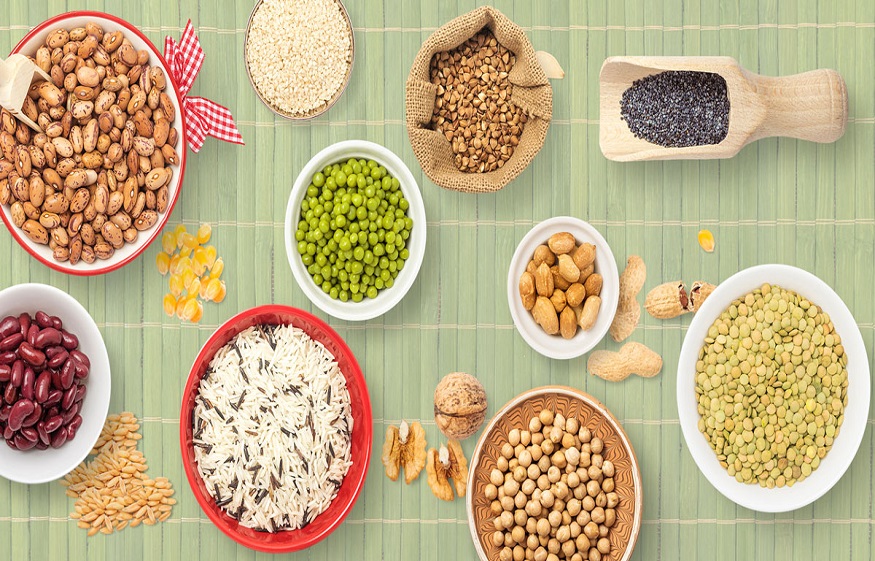Allergy to legumes and nuts

Nuts and legumes are two of the Mediterranean Diet pillars; however, many people suffer from allergies when eating them. Avoid problems with its involuntary consumption with the following tips.
Legumes and nuts are consumed widely in the world’s population’s food. According to food surveys, we do not incorporate them into our diet with experts’ frequency. They are two great representatives of the Mediterranean Diet, and therefore we must increase their consumption.
However, not everyone can do it by having allergic reactions when taking them. We tell you how you can avoid intolerances and major ills with its involuntary consumption. But first, let’s see why they are so important.
Properties and benefits of legumes
The legumes are a set of dry seeds, clean, healthy, and separated from the pod, from the legume family. They are considered the complete food group of plant origin that we have and with numerous health benefits. Carbohydrates and protein are major macronutrients in legumes and have the advantage of having a low amount of fat.
Foods of plant origin do not stand out for providing a high content of proteins of high biological value. However, legumes stand out within the plant kingdom for being the plant food with the highest protein content and the best quality.
However, legumes are poor in sulfur amino acids; hence by combining them with cereals, it is possible to compensate for this deficiency and offer a dish with a complete amino acid profile.
Nuts are seeds that, as such, are characterized by having less than 10% water in their composition. In this way, they have a high energy concentration, provided by unsaturated fats (which are around 50%), carbohydrates, and proteins. Almonds, hazelnuts, walnuts, pine nuts, pistachios, or cashews are found in this food group.
The legumes and nuts that cause the most allergies
The legumes traditionally cultivated in our country to be part of our diet are lentils, chickpeas, beans, peas, soybeans, and beans. However, other foods are part of the legume family, but we are not usually aware, such as peanuts and lupins, and other derivatives used in food such as their flours.
The exact prevalence of allergy to legumes in our country is unknown, although it can be said that it is the fifth allergy in terms of its importance in children and the seventh in adults.
Lentils are responsible for most allergic reactions in children, followed by peas and peanuts. Interestingly, soybeans and white and green beans are less frequently implicated in allergy development.
Nut allergy
The case of nuts is different since they are one of the most frequent food allergies. In the general population, the prevalence is around 1%. In Europe, hazelnuts are perhaps the dried fruit that causes the most allergies, with almonds and walnuts being the cause of the most allergies to nuts in our country.
In most cases, if you have an allergy to dried fruit, sensitivities are usually present when ingesting others from similar groups. There is an association between walnut, hazelnut, and almond, which means that you also have reactions to the other two when you have an allergy to one.
Allergic reactions to nuts and legumes
As in all allergies, the allergens present in legumes are proteins that the body, specifically the immune system, interprets as foreign and harmful agents. These proteins cause the immune system to produce immunoglobulin E in an exaggerated way, which binds to cells called mast cells and which are responsible for releasing powerful mediators that cause the typical symptoms of allergy: urticaria, edema, gastrointestinal discomfort, and even hypotension ( shock ). The peanut is, perhaps, the legume that can trigger more serious symptoms, such as anaphylactic shock.
In nuts, allergic reactions can occur with different intensity, such as oral itching, sneezing or tearing, up to severe hives, angioedema, and anaphylactic shock. These symptoms may vary based on the individual’s age, previous sensitivity, allergen exposure, or other allergies present.
Heat treatment and allergenicity
In some cases, heat treatment of vegetables can inactivate allergenic proteins present. Heat can cause important changes in the protein structure so that it is inactivated and can no longer perform its function. However, resistance to denaturation of legume proteins has been described, which can even increase legumes’ allergenicity, as is the case of peanuts, which increases with heat treatment.
In nuts, something similar happens. Their proteins are highly resistant to heat and the digestive process, so it is common for the allergic reactions they produce to be immediate and of excessive intensity.
Cross-reactions
Cross-reactions occur when the same allergenic protein is found in several different foods. For example, cross-reactions have been described between peanuts, tomatoes, grass pollen, and between mugwort and groundnut pollen and soybeans and latex.
In the case of nuts, it is very common for someone with an allergy to one type of nut to present it to others. Some studies relate a cross-reactivity between hazelnut, walnut, and almond. Other cases described are the cross-reaction between hazelnut and sesame seeds and between pistachio and cashew, the latter from the same family. In other cases, cross-reactions with the pollen of some plants such as grasses, birch, and mugwort, are also common.







